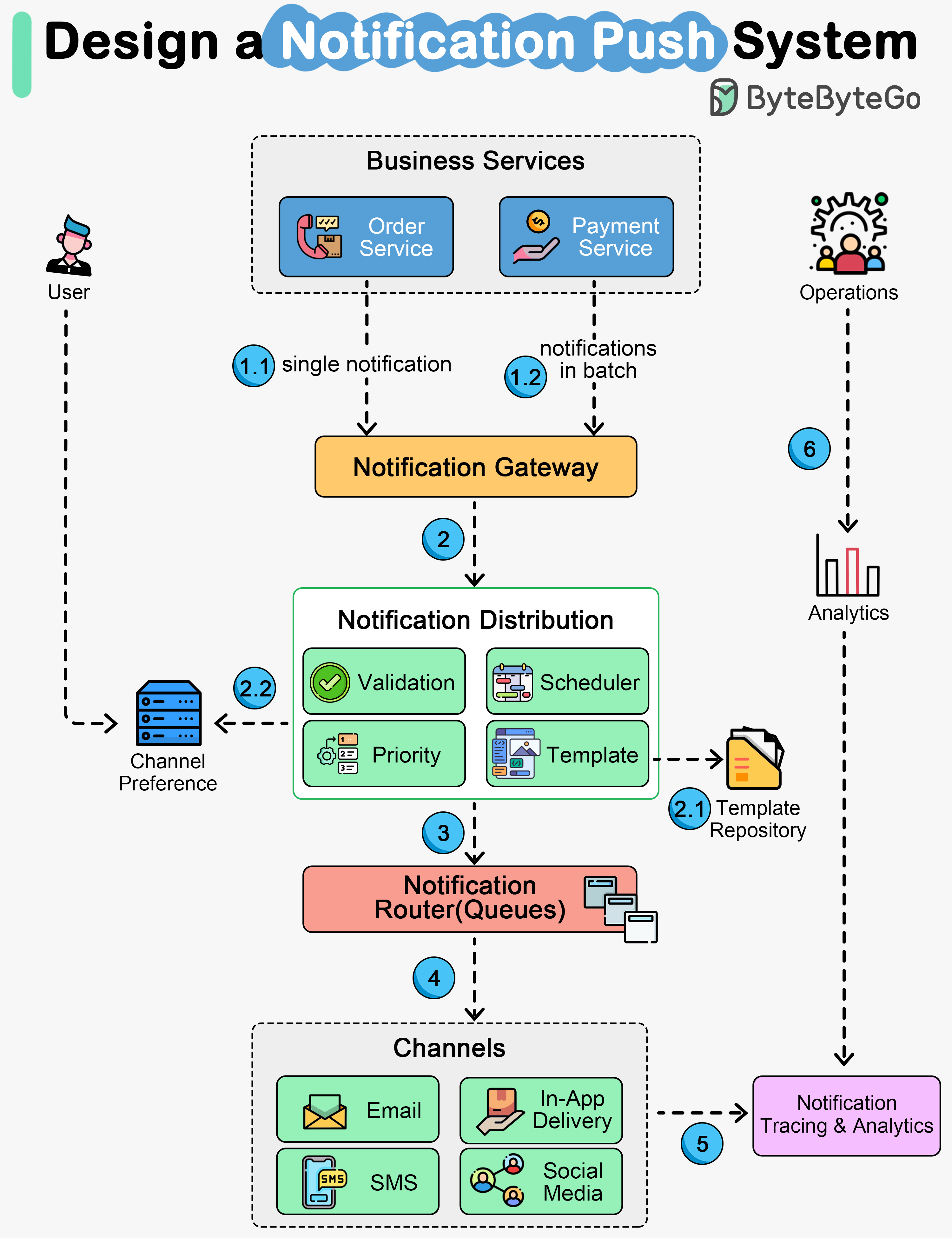
The diagram above shows the architecture of a notification system that covers major notification channels:
- In-App notifications
- Email notifications
- SMS and OTP notifications
- Social media pushes
Let’s walk through the steps.
- Steps 1.1 and 1.2 - The business services send notifications to the notification gateway. The gateway can handle two modes: one mode receives one notification each time, and the other receives notifications in batches.
- Steps 2, 2.1, and 2.2 - The notification gateway forwards the notifications to the distribution service, where the messages are validated, formatted, and scheduled based on settings. The notification template repository allows users to pre-define the message format. The channel preference repository allows users to pre-define the preferred delivery channels.
- Step 3 - The notifications are then sent to the routers, normally message queues.
- Step 4 - The channel services communicate with various internal and external delivery channels, including in-app notifications, email delivery, SMS delivery, and social media apps.
- Steps 5 and 6 - The delivery metrics are captured by the notification tracking and analytics service, where the operations team can view the analytical reports and improve user experiences.
